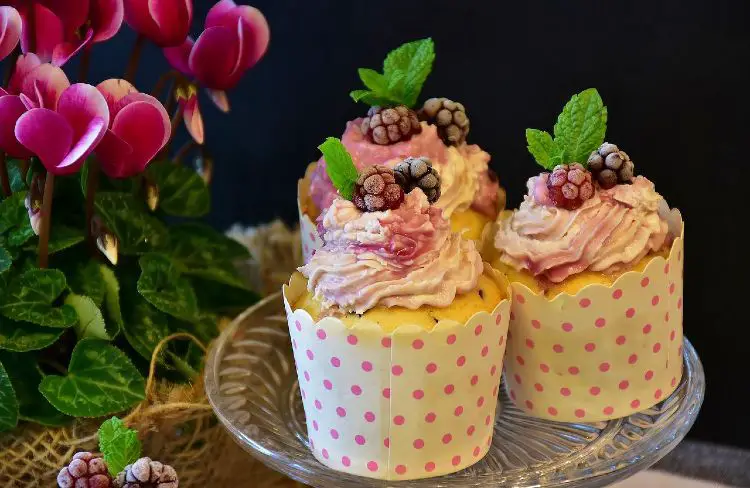Edible Flower Seeds
I’ve been growing flowers alongside the vegetables in my garden for some years now. Apart from providing a splash of colour, the flowers attract a whole range of insects which pollinate the vegetables and help to keep the aphids under control. But in the last couple of years I have discovered another benefit of these flowers: edible and tasty seeds. So, as the summer comes to an end, I am busy harvesting and drying seeds for the kitchen store cupboard, to provide flavour for a range of dishes through the winter.
Seeds from plants like poppies, fennel and coriander are very easy to collect. All you need is a bowl or paper bag (avoid plastic as this can cause condensation around the seeds) and a dry day, ideally after any morning dew has dried up. The key thing to harvesting seeds is to make sure they are completely dry before you store them. Any dampness can quickly lead to mouldy, unusable seed. Collect either just the seeds, pulling them gently from the seed head, or cut the whole seed head and put it upside down over a collecting tray or in a paper bag until the seeds dry and fall from it naturally. Once the seeds are dry, clean them by removing any bits of stem or other chaff. They can then be stored in a clean jar.
So what should foodie gardeners be adding to their list of plants to grow when planning for a bountiful seed harvest next year?
One of the easiest plants to grow for seed is the poppy. Poppies produce large quantities of tiny blue-black seeds that can be used in sweet and savoury dishes. Growing poppies is really easy and the flowers are pretty enough to grow in a flower border if you have no space in the vegetable garden. Scatter the seeds onto a patch of prepared soil in the spring. Thin the seedlings as they emerge to give each plant space to grow, then sit back and enjoy the flowers. There are a variety of poppies available, but for seed production the opium poppy (Papaver somniferum) is a good choice, coming in a range of colours and producing plenty of seed in large, easy to harvest seed heads. Once the seed heads start to turn brown with gaps appearing at the top, the seeds are ready to collect. Snip the seed heads from their stems, taking care to keep them upright. Then simply upend the whole seed head over a bowl so the seeds spill out. Poppy seeds make a great topping for bread, and are an essential ingredient for lemon and poppy seed muffins.
Fennel is a lovely herb to grow in the kitchen garden. The leaves of this tall, elegant plant can be picked and used to give an aniseed flavour to fish and vegetable dishes, and the yellow flowers attract hoards of hoverflies. Fennel seeds can be harvested when they start to turn light brown and are just becoming loose from the seed head. Like the leaves, the seeds have a strong aniseed flavour and are used in breads, marinades and to make fennel tea.
Although usually grown for its leaves, coriander is another herb with edible seeds. Quick to flower as the summer gets warmer, coriander plants will readily produce seed. Seeds can be harvested while still green by gently pulling them from the flower stem. Lightly crushed and added to Greek yoghurt or soured cream the green seeds make a refreshing and tasty dip. Leave the seeds on the plant a little longer and they will start to turn brown. You can then collect them to dry and store for use in Mexican and Indian dishes, chutneys or to add extra flavour to home-made burgers.
Sunflowers are easy to grow, and add height in the garden. The flowers come in a range of colours from the traditional yellow, through oranges to deep reds. The main problem for anyone wanting to harvest the seeds is beating the local birds to them as they ripen. If you can get there first, the seeds are easily collected as they simply come away from the seed head when you brush your finger over them. The fiddly and time consuming bit is removing the sunflower seed from its husk. The seeds can be eaten as a snack (roasting them in a low oven with a sprinkling of salt gives them extra flavour), or added to breads and sprinkled over salads or cereals.
Other edible seeds that can be collected from the garden include nasturtiums, which have a peppery flavour (similar to the flowers and leaves which are also edible), and can be added to salads. Pumpkin and squash seeds can be eaten raw, or roasted to bring out the flavour. Cooked in a low oven with a light coating of olive oil flavoured with salt, chilli or paprika they make a great snack with a glass of cold beer.
So this winter, while you are flicking through the seed catalogues and choosing your must have plants for the kitchen garden next year, remember that edible seeds can provide a range of flavours for your kitchen, and many have the added bonus of producing beautiful flowers through the summer.
